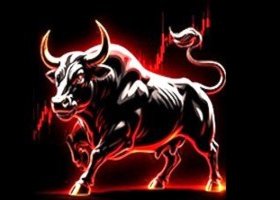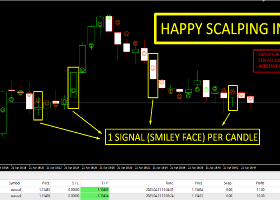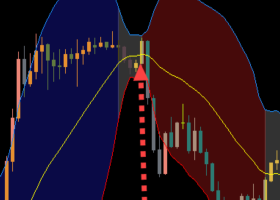
A simple scalping trading strategy based on Stochastic and Moving indicators.
Scalping is a popular trading strategy used by traders in the financial markets to take advantage of small price movements. It involves entering and exiting trades quickly, sometimes within a few seconds or minutes, to profit from small price fluctuations. One of the most common indicators used by scalpers is the Stochastic Oscillator, which measures the momentum of price movements, and the Moving Average, which shows the trend of price movements over time. In this article, we will explore a simple scalping strategy that uses these two indicators.
The Stochastic Oscillator is a momentum indicator that compares the closing price of an asset to its price range over a specified period. The indicator measures the strength of a trend and identifies potential trend reversals. It oscillates between 0 and 100, with values above 80 indicating overbought conditions and values below 20 indicating oversold conditions.
The Moving Average is a trend-following indicator that shows the average price of an asset over a specified period. It helps traders identify the direction of the trend and potential trend reversals. The Moving Average can be calculated using different time frames, such as 50-day, 100-day, or 200-day Moving Averages.
The strategy we will discuss is a simple scalping strategy that uses a 5-minute chart and the Stochastic Oscillator and Moving Average indicators. Here are the steps to follow:
- Step 1: Identify the Trend First, we need to identify the direction of the trend using the Moving Average indicator. If the price is above the Moving Average, the trend is bullish, and we should only look for buying opportunities. If the price is below the Moving Average, the trend is bearish, and we should only look for selling opportunities.
- Step 2: Identify Overbought and Oversold Conditions Next, we need to use the Stochastic Oscillator to identify overbought and oversold conditions. If the Stochastic Oscillator is above 80, the market is overbought, and we should look for selling opportunities. If the Stochastic Oscillator is below 20, the market is oversold, and we should look for buying opportunities.
- Step 3: Enter the Trade Once we have identified the trend and overbought or oversold conditions, we can enter the trade. If the trend is bullish, and the Stochastic Oscillator is below 20, we can enter a buy trade. If the trend is bearish, and the Stochastic Oscillator is above 80, we can enter a sell trade. We should set our stop loss at the recent swing high or low and our take profit at 2 times our stop loss.
- Step 4: Exit the Trade We should exit the trade once the price reaches our take profit or stop loss level. If the price reaches our take profit level, we should take our profits and exit the trade. If the price reaches our stop loss level, we should accept the loss and exit the trade.


